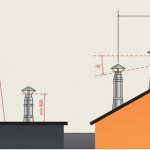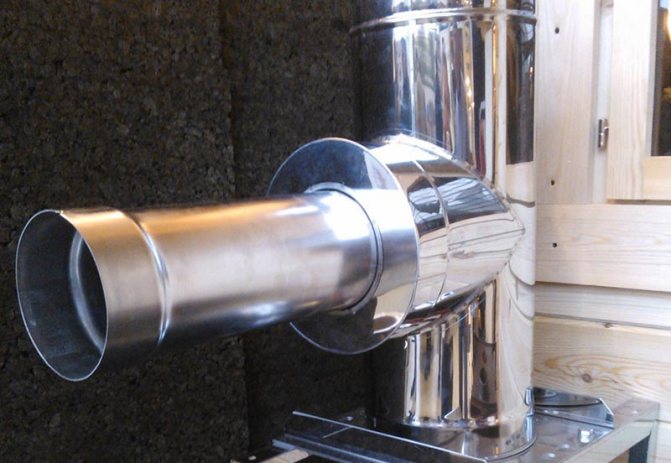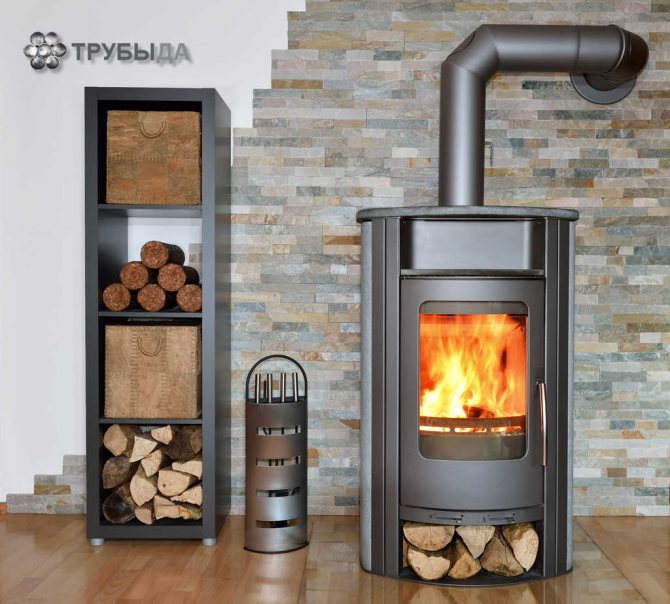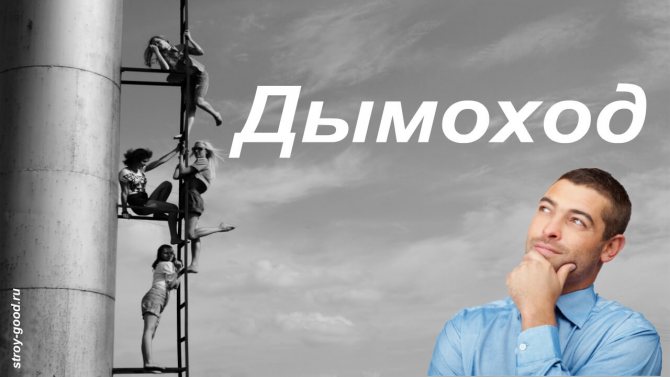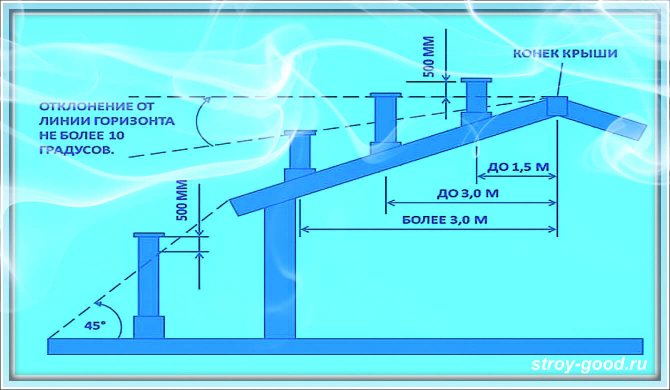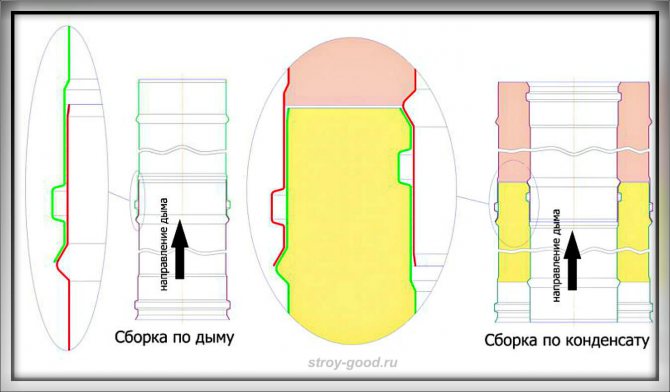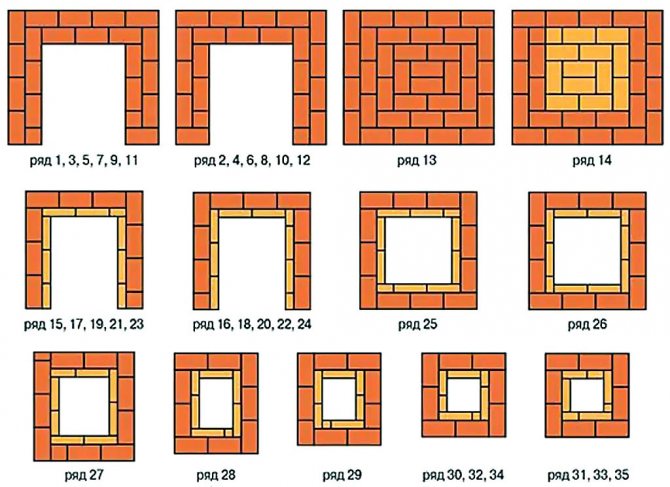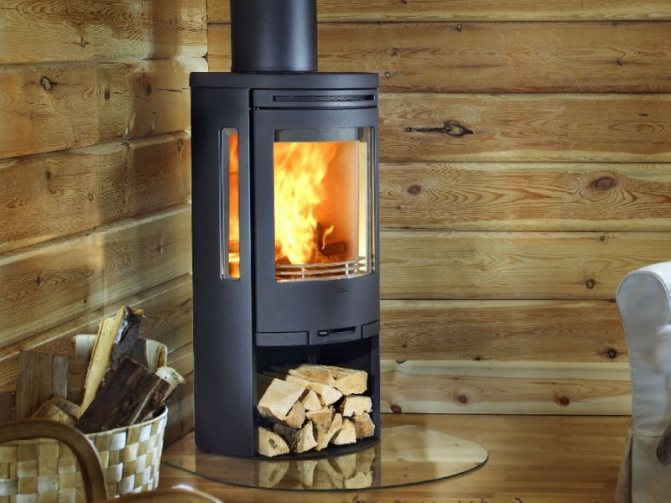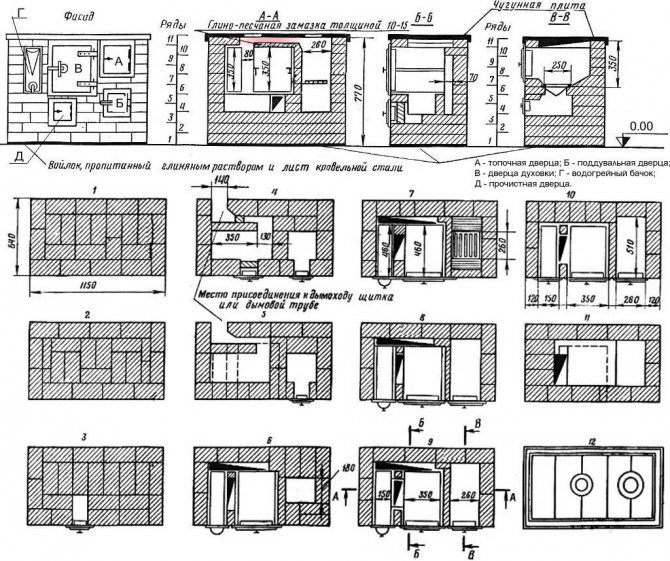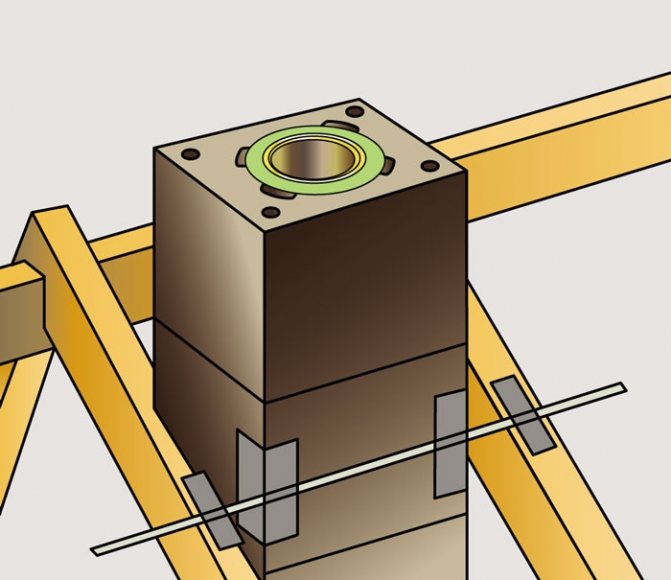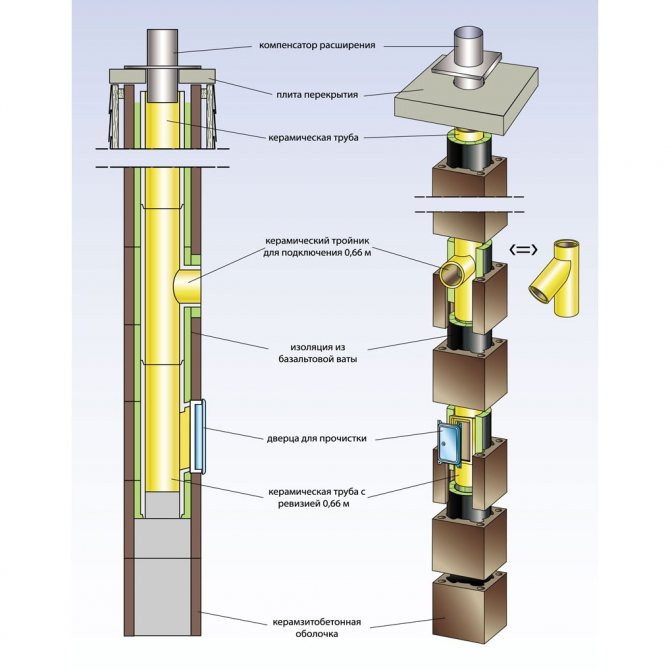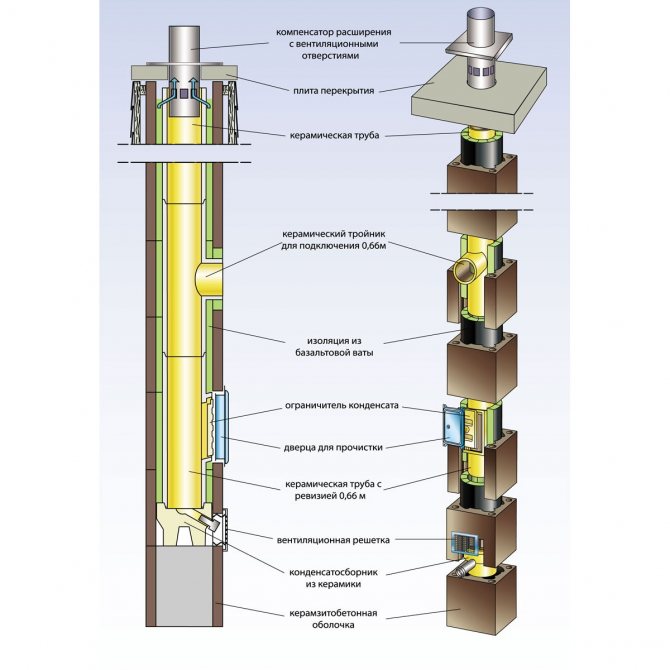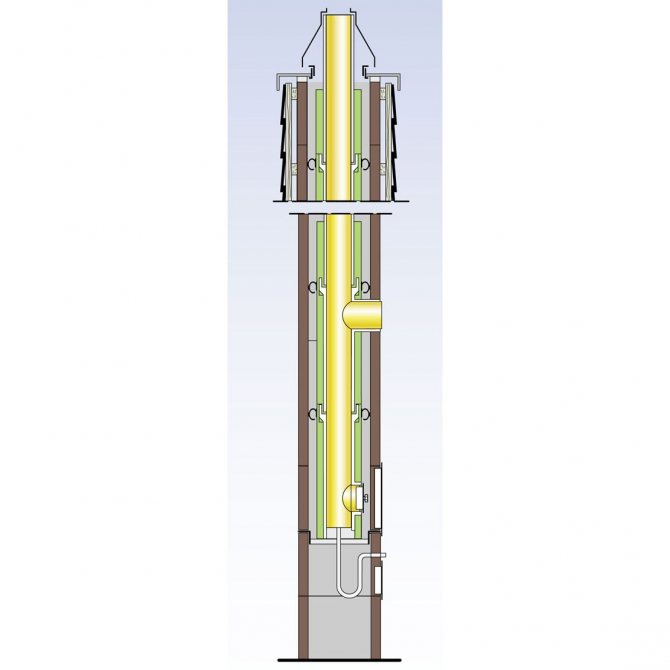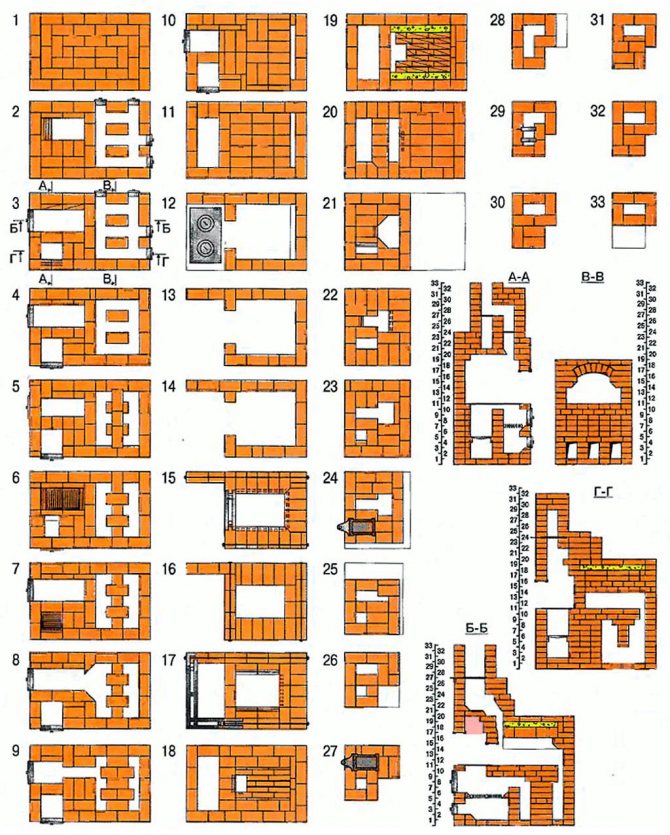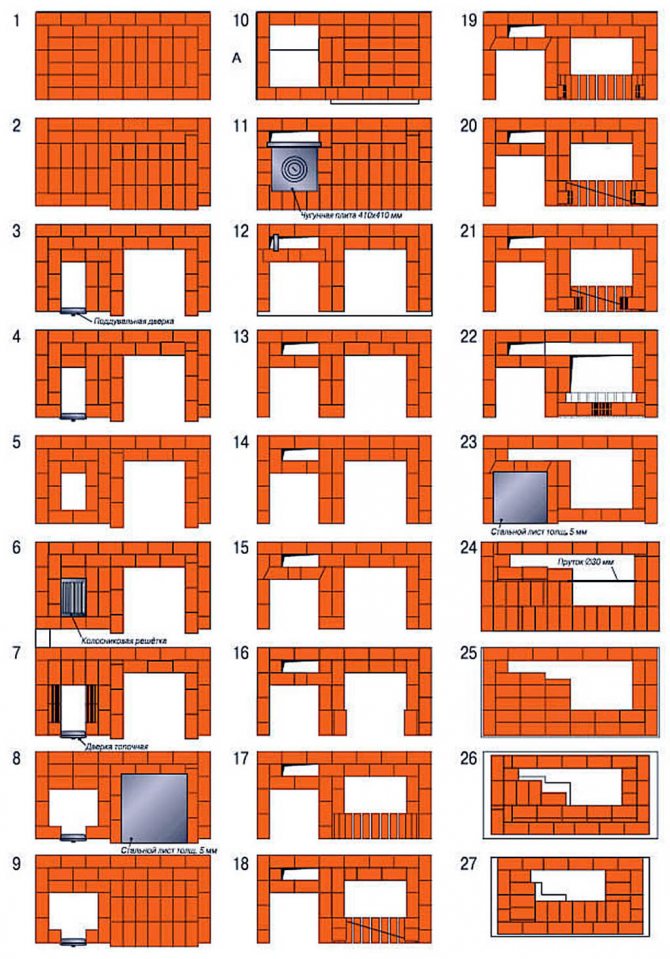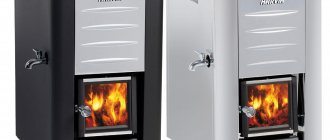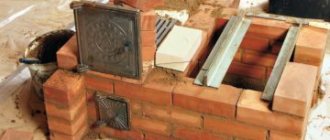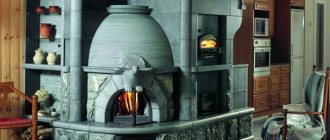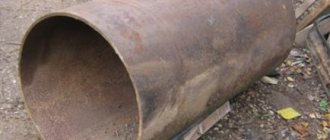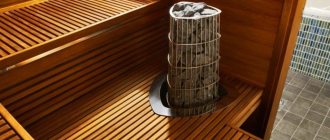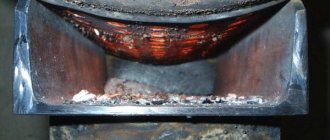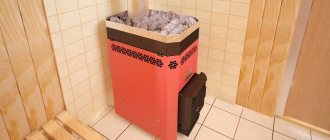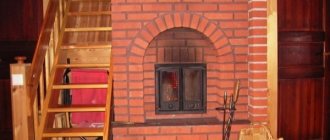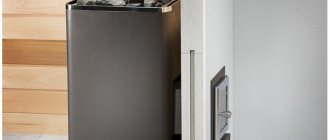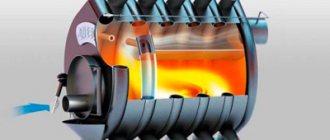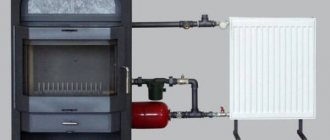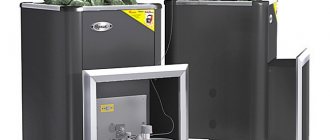Types of devices
Engineers from various companies successfully cope with the task of creating devices that do not require a chimney arrangement. All of them have their own advantages and disadvantages, individual appearance and unique functionality. The cost of such products also plays an important role, since for many people such fireplaces go far beyond the previously allocated budget.
In specialized stores you can find the following types:
- Electrical;
- Ecological (biofuel stoves);
- Wood-burning (one caveat - not a chimney is used, but a chimney).
By material of manufacture:
- Tiled stoves;
- Brick;
- Metal devices.
If you have a desire to equip your home quickly and on a budget, then you are guaranteed to find a suitable solution among these devices. Everything will depend on financial capabilities and individual preferences.
The main stages of the calculation ↑
The calculation of the chimney is carried out taking into account such parameters as the power of the connected heating device, shape and others. The optimal height and cross-sectional diameter are calculated based on the SNiP of the stove and chimneys.
Height above the roof
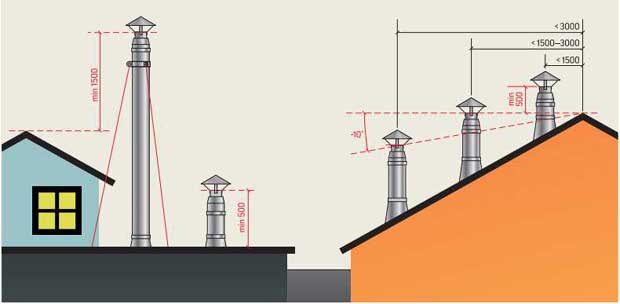
To determine the height of the outlet channel of industrial boilers, a special formula is used, which describes its relationship with the static draft, the average temperature (K) in the pipe and the average outside air temperature in the summer. If necessary, the value obtained from the results of calculations is adjusted upward, taking into account the following rule:
Sectional area of the pipe ↑
In practice, they usually do without special calculations, based on the following section values, depending on the power of the unit:
- less than 3500 W - 14 × 14 cm;
- 3500-5200 W - 14 × 20 cm;
- 5200-7200 W - 14 x 27 cm.
The cross-sectional area of the cylindrical channel is assumed to be the same.
If the cross section is significantly larger than the calculated value, then the thrust will worsen, and as a result, the system will be unstable. A smaller cross-section leads to poor removal of combustion products up to the complete cessation of this process.
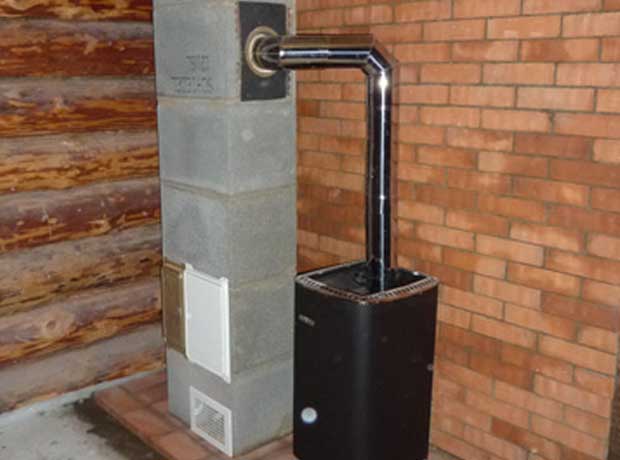

The choice of material for the construction of the flue gas system is based on the type of fuel used for heating. For example, ceramic MDS pipes are best suited for gas equipment, while brick ones can quickly collapse.
A brick chimney for a metal stove is considered a classic version of the exhaust system device. The brick structure is assembled exactly according to the project, where the laying of each layer of the channel is prescribed separately. In this case, it is necessary to obtain a minimally rough surface from the inside and ensure complete tightness.
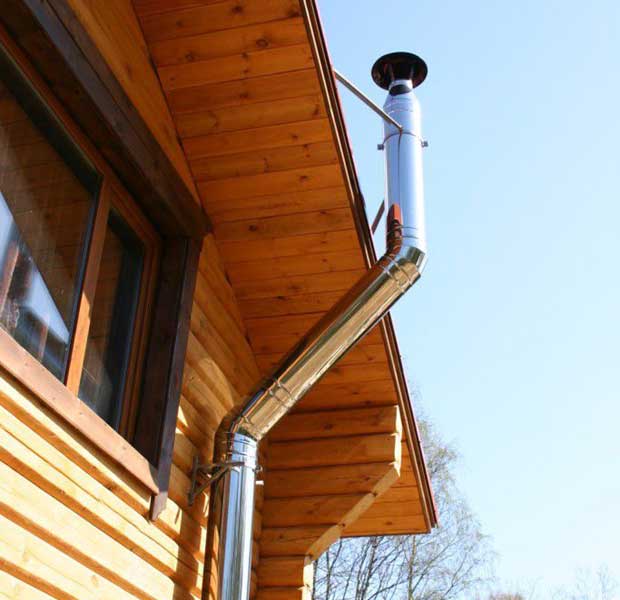

Stainless steel is most often used today. In the structure, steel pipes can be: insulated and non-insulated:
- non-insulated ones are used exclusively for the internal installation of stoves and chimneys: they are installed in a special shaft;
- when installing a pipe outside, it must be insulated to prevent moisture condensation inside the pipe.
Security ↑
For safety reasons, the chimney must be properly insulated, especially if the channel passes through ceilings in the immediate vicinity of combustible materials. The choice of insulation method is based on the type of floor material and pipe temperature. It is great if the walls and ceiling near the passage of the structure are finished with fireproof material. If this is not the case, then the heated parts are isolated from hazardous materials using metal sheets and a non-combustible material interlayer.
Bio fireplaces
Excellent stoves for giving without a chimney can be found in a wide assortment of bikamines. These solutions appeared on the wide market relatively recently, but in a short time such models managed to gain the attention of a large number of customers.
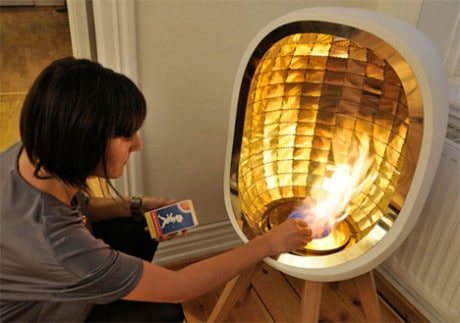

The main principle of operation of biofireplaces is hidden in the use of special fuel, which burns without smoke, soot and combustion products. All its components completely burn out, which is the reason for the name of the fireplace.
The device has a special compartment where a certain amount of fuel is located. The total volume is enough for 5-8 hours of continuous work, however, more accurate numbers can be obtained in the technical passport, since everything depends on the model. In more expensive biofireplaces, special reflectors are installed to concentrate thermal energy.
On the territory of the Russian Federation and the CIS countries, the following manufacturers of biofireplaces are most popular:
- ZeFire;
- BioKamino;
- Kratki;
- Planika;
- Silver Smith;
- WildFlame;
- Bioheat.
As you can see, the choice is really great, so take a few hours of your own time to choose the best heating devices without a chimney!
Electric fireplaces
In specialized online stores, a wide range of electric fireplaces is offered, which not only do not have a chimney, but do not even require classic fuel!
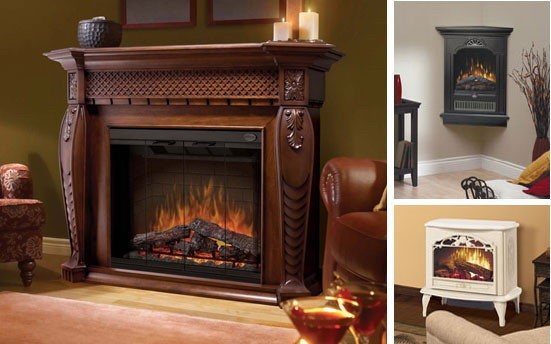

Electric fireplaces have gained very wide popularity throughout the country, as they are devoid of all the disadvantages of classic fireplaces. Modern devices simulate the effect of burning a flame, and heat is released due to the built-in heating element.
The devices have an elegant appearance, a large number of settings, and are also quite compact and convenient. There is a place for such fireplaces not only in a country house or summer cottage, but even in a residential apartment. Be sure that you will highly appreciate such a fireplace!
The most common and affordable manufacturers include the following companies:
- Europe Deluxe;
- Sheraton;
- Acadian;
- April;
- Real-Flame;
- Royal Flame and many others.
Tiled stoves
Tiled stoves are the most expensive, sophisticated and beautiful fireplaces and stoves available today. They are purchased extremely rarely, since their price and the complexity of construction / installation are extremely high.
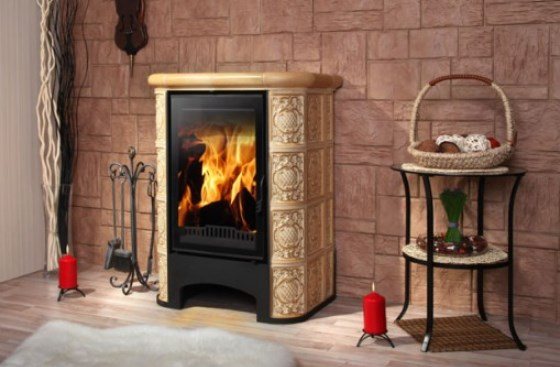

The main feature of such stoves is the use of expensive tiles and glaze, which makes them accessible only to extremely wealthy people. The average cost is rarely less than ten thousand euros.
If you really want to install a tiled stove in your home, then the products of the following companies are suitable for you:
- Panonie;
- Bavaria;
- Britania;
- Florencie;
Metal stoves with chimney
Metal furnaces are models that are most often made from high-quality cast iron alloys and its analogues. In the past, such products were known as "potbelly stoves", since for the first time they began to be actively used in Western countries. Thanks to the development of industry, a wide selection of such models has appeared in our country.
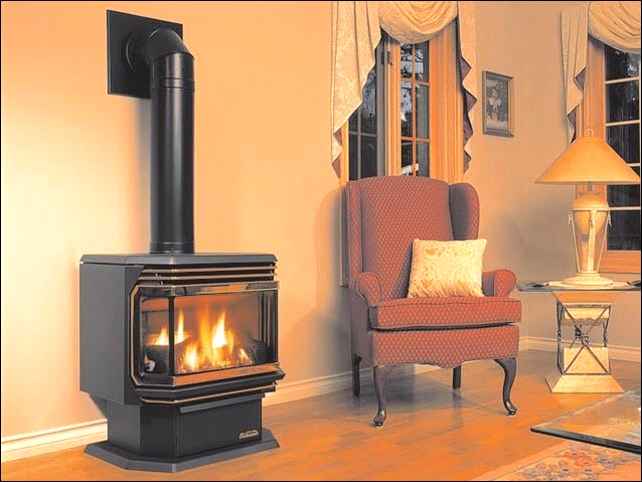

The main advantages of such stoves without a chimney are compactness and wide functionality, which is not limited to heating only. Thanks to the presence of special niches, cooking, drying clothes and much more is possible.
An important feature is the need to install a chimney, which performs similar functions as a chimney, but has a simpler structure. The chimney is a hollow metal pipe that simply removes the combustion products. There is no need for a complex device and additional components that protect the interior.
The design of the metal oven is both simple and ingenious. The internal firebox has a space where the fuel is directly burned.This section is practically no different from the classic firebox. Around it is a large number of semi-closed tubes that contain air. As the fuel burns, it heats up, which allows the accumulation of thermal energy, which significantly increases energy efficiency.
One should not forget about the high heat capacity of cast iron, from which such furnaces are usually produced. It cools down extremely slowly, which allows you to forget about the problem of heating the furnace at night - the metal gradually cools down over 8-10 hours. All this is extremely convenient in the format of using the stove in the country or in a country house.
The product has a pleasant appearance and is suitable for many design trends. Forget what looks like a nightmare legacy of the past - many models have a large number of forged elements that make metal stoves without a chimney a real work of art.
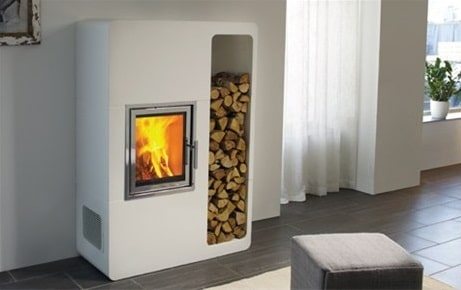

The number of manufacturers of metal furnaces is extremely large, so customers are forced to focus on the assortment that is available and the purchase budget. If you want to purchase a really high-quality, durable and visually attractive product, then you should pay attention to the products of the following manufacturers:
- EdilCamin (Italy);
- Corradi (Italy);
- Thorma (Slovakia);
- Biokaitra (Lithuania);
- Amur (Russia);
- Brandenburg (Russia);
- ABX Arktis (Czech Republic).
As can be noted, the choice is really great, so everyone will find a suitable option for themselves!
Pros and cons of different designs
Individual advantages may outweigh disadvantages, depending on the circumstances. It is clear that if the tank is located on the stove or attached to the side, then three unpleasant things follow from this:
- constant heating of water will lead to the formation of steam, but it will not be the steam heated above 100 degrees, which is called light - it is obtained only from overheated stones. And ordinary heavy steam will pour out of the container, from which it is difficult to be in the steam room.
- using heated water for washing is problematic if the steam room is not combined with the steam room. We'll have to carry hot water to the sink and wash the way our ancestors washed).
- in tanks attached to the side of the stove, heating occurs worst of all, because the walls of the stove do not warm up as much as the top or chimney. Plus, the wall of the tank itself will eventually lose thermal conductivity due to scale, and the wall of the furnace - due to scale. Therefore, the water warms up poorly, it remains cold below, it must be mixed by hand.
However, there are also advantages to such structures - they are easy to fill with water precisely because the container is not located high. But this is if there is no cold water supply either. Otherwise, the plus is leveled.
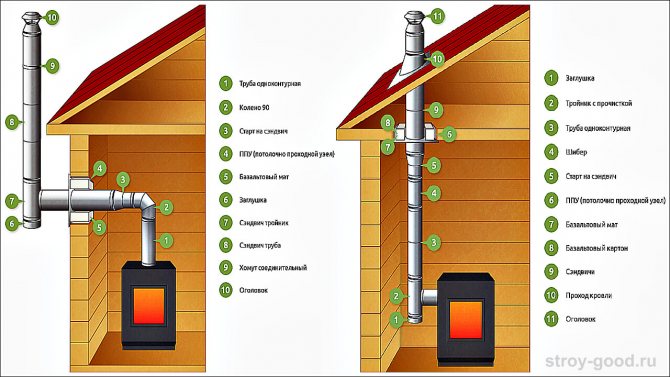

By the way! The larger the contact area of the container with water and the stove, the faster the heating. But this is not always worth striving for - why do you need clubs of heavy steam in an unheated bath?
Of course, you still have the opportunity to arrange a shower from any tank. And, although the stove-makers do not advise using the pump, the forced circulation of the liquid in the system will calmly take water from even the instructor, even from the attached tank. The main thing is not to forget to add.
In fact, we already answered this question in the previous chapter, but the answer referred to the specifics of a particular bath.
How to calculate the required volume of the container? Assume that one washer needs at least 10 liters of water.
How is it supposed to heat adjacent premises? If no other options are available, a remote reservoir can be used for this purpose. It goes without saying that in this case it is not worth insulating it. Alternatively, an oven can be used to heat the antifreeze in a separate heating system.
Are you ready to create forced circulation? If so, then there are no obstacles to choosing any of the described designs.In this case, you will receive not only a shower, but also, if desired, heating through radiators. True, you will have to organize the system according to all the rules.
For example, do not forget about the need to install an expansion tank that receives excess fluid in the system.
Brick ovens without chimney
Brick stoves without a chimney are a fantasy for many, but such designs are still real, but this imposes serious restrictions on their scope. Due to the high probability of the release of combustion products into the surrounding space, such models are installed outdoors: in a garden or near a house territory.
Such brick and stone stoves are also known as "smoke sauna stoves", as during their operation, a large amount of burning and soot is formed, which are deposited on the walls of the furnace. It doesn't make the slightest sense to clean off such carbon deposits, since over time the result will be the same. The reduction in emissions is achieved through the complete combustion of all components in the furnace under the influence of high temperatures.
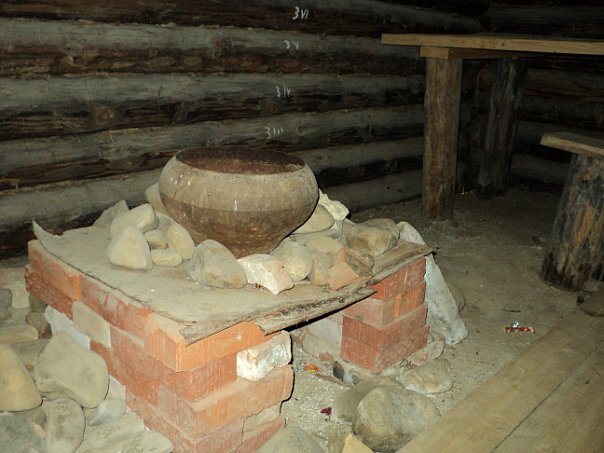

Smoke baths and stoves for them have been actively used for thousands of years, so modern projects are based on those buildings that were invented by our ancestors.
The most popular types of smoke saunas are:
- Chum or yurt;
- Semi-dugouts;
- "Vlaznye" pits;
- Old Slavonic "sources".
There are really a lot of options, but dugouts and their counterparts are most often created, since they have an authentic appearance and a pleasant atmosphere inside!
Chimney installation methods
The pipe for the stove in the bath is very hot during the heating process, this must be taken into account in the design process. On the one hand, this is good, since the heating of the working and auxiliary premises is carried out. On the other hand, there is a risk of fire. The risk of the formation of cracks in the chimney through which carbon monoxide will escape cannot be ruled out. The choice of installation method is made based on the design of the bath and an assessment of possible risks.
Internal location
The whole structure is located strictly vertically. The pipe is fastened to the side pipe of the boiler or directly to the upper part of its body. The chimney is assembled in accordance with the technology inherent in the selected material. The brick pipe is best folded into a square section to make it easier to work and clean the channel. Metal links should be installed from the bottom up, building up the structure in stages. The joints are treated with a heat-resistant sealant and closed with flat clamps. The upper part of the chimney is placed at a level not less than 50 cm above the ridge or 100 cm of a flat roof.
Advantages of internal lining:
- ease of installation;
- lack of corners, which contributes to good traction and a decrease in the amount of deposits;
- ease of cleaning a dirty channel;
- additional heating of the room and attic;
- less condensation after the end of the furnace.
To make a pipe in a bath, it is necessary to break the integrity of the ceiling and roofing. Arranging the correct passage through the floors requires an additional investment of time and money. A very hot pipe is a fire hazard. Measures must be taken to insulate the chimney.
External location
This decision is made when the boiler is in close proximity to the external load-bearing wall, the area of the room is limited. The starter element is connected to the boiler outlet and is led out through a hole in the wall. Then the smoke enters a vertical pipe or a box lined with bricks on the wall. The second option is more laborious and costly, but it allows the use of thermal energy to heat the room. When leading the channel to the outside, it is necessary to avoid right angles along its length.These areas reduce traction and are places where soot, dust and debris can accumulate. The problem is solved by using a bend in which a condensate collector is provided.
The advantages of outdoor technology:
- the integrity of the floors, the absence of potential leaks;
- saving free space inside the bath;
- simplicity and speed of installation;
- fire safety, since the chimney does not come into contact with combustible materials and surfaces;
- ease of maintenance and repair.
There are also drawbacks to the external design. The main one is the formation of condensation during heating and cooling. Making such a pipe into the bath with your own hands, you need to take care of its insulation or use a sandwich section. The second disadvantage is that there is no possibility of full use of the released thermal energy that goes out of the room to the outside. This leads to increased fuel consumption.

